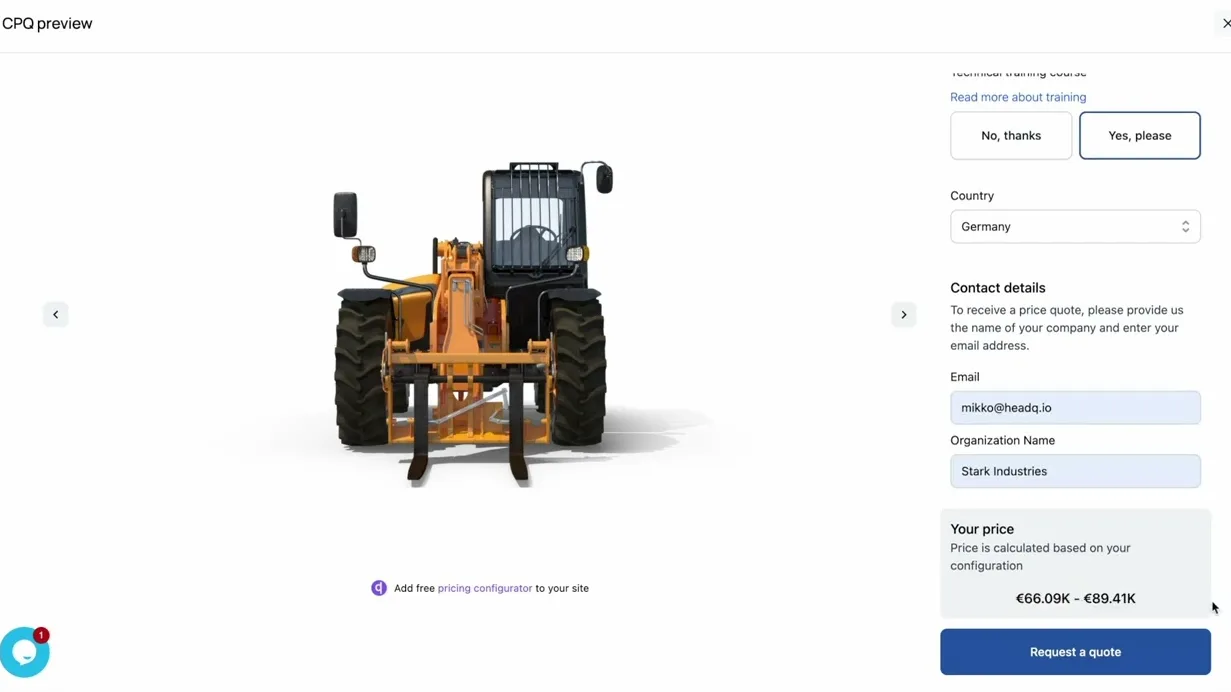As the digital drumbeat grows louder, manufacturers find themselves at a crossroads. The question is no longer if they should embrace ecommerce, but how.
While daunting, this transition offers many opportunities for manufacturers ready to adapt and thrive in the digital age.
1. Deciding on the Online and Offline Product Mix
At the heart of transitioning to ecommerce for manufacturers lies a pivotal decision: which products to sell online and which to reserve for offline transactions.
This isn’t merely a black-and-white choice but rather a nuanced decision-making process that can significantly impact your business strategy.
First, you should consider the online purchase feasibility of your products. Ask yourself, can customers easily buy this product online? If so, at what point in the buying process do they make that decision?
It’s crucial to align your expectations with reality. For instance, is a complete online payment necessary, or is initiating an order sufficient to start the sales process? Industrial products are usually not bought with a credit card but instead invoiced.
The concept of RoPo (research online, purchase offline) demonstrates that virtually no product is off-limits for online sales.

The key is to provide an online platform rich with detailed product information, straightforward purchasing options, and comprehensive customer support, whether through advanced AI chatbots or dedicated sales representatives.
This approach ensures that your digital storefront meets the high standards set by sectors that have long embraced ecommerce, such as consumer products and financial services.
2. Embarking on a Journey of Continuous Learning
The shift to ecommerce shouldn’t be seen as a daunting, costly project but as an evolving journey of learning and growth. Starting small allows you to gather valuable insights and adapt your strategy as you progress. This iterative process is more about continuous improvement than reaching a definitive end point.
e.g
Going all out and building a “perfect world”, end-to-end integrated ecommerce solution rarely makes sense. It’s too risky, too costly and only seldom ends up with positive return on investment.
What you should consider instead: build a digital storefront by embedding digital commerce capabilities such as visual product configurators and shopping cart or quote cart. This approach enables you to start testing the channel within days, not years.
👉 We have written a full blown guide about the transition to ecommerce for manufacturing companies. It discusses the risks and opportunities associated with different ways of selling online.
For manufacturers, the digital transition is less about immediate perfection and more about fostering a culture of innovation and flexibility.
As you embark on this journey, you’ll discover new opportunities to enhance your online presence, refine your product offerings, and better serve your customers.
3. Bridging the Online and Offline Divide
A strategic approach to integrating your online and offline channels can significantly amplify your reach and sales potential. For example, consider making digital channels the primary avenue for spare parts sales, with physical stores serving as a secondary option.
Conversely, when dealing with complex machinery, use your website to streamline the process of handling Requests for Quotations (RFQs). Allow customers to configure their desired products and request a quote. This can be followed up by finalizing the sale through offline interactions with your sales representative. This is aligned with the buyers’ expectations: 83% of B2B buyers prefer ordering through digital commerce.
“Your website should act as the main sales channel, irrespective of where the actual transaction takes place.“
This unified approach ensures a seamless customer experience, leveraging digital efficiency while maintaining the personal touch that many customers value in offline interactions.
4. Reimagining Your Business Model
The move to ecommerce presents an opportune moment to reassess and potentially reconfigure your existing business model.
Utilizing tools like CPQ (configure, price, quote) software can deepen your understanding of customer needs and preferences. Additionally, a shift towards providing distributors with qualified leads and closely monitoring their performance can offer insights into the most effective sales strategies.
This era of digital transformation also sees the rise of direct-to-consumer (DTC) models, challenging the traditional distributor-led frameworks.
By directly engaging with end-users, manufacturers can gain invaluable insights, foster stronger customer relationships, and streamline the sales process.
What’s Next? Act Now, Shape Your Future
The journey to ecommerce is not a path to be traversed tomorrow but a vision to be realized today.
In a rapidly digitizing world, waiting on the sidelines is equivalent to moving backward. For manufacturers, especially those in the realms of heavy machinery and industrial tools, the message is clear: the time to lay out your vision and start your digital transformation is now.
Begin by evaluating your product lines, identifying opportunities for online sales, and considering how digital sales tools can enhance your customer’s buying journey. Benchmark companies from other industries too! Tesla did a great job introducing a digital-first sales strategy and succeeding with it.
Look at your business model through a digital lens and be open to reconfiguring it to meet the demands of the digital age. Remember, in the world of manufacturing, the integration of online and offline sales channels, coupled with a forward-looking business model, is not just about surviving; it’s about thriving.
The digital revolution in manufacturing is well underway. Are you ready to be a part of it?